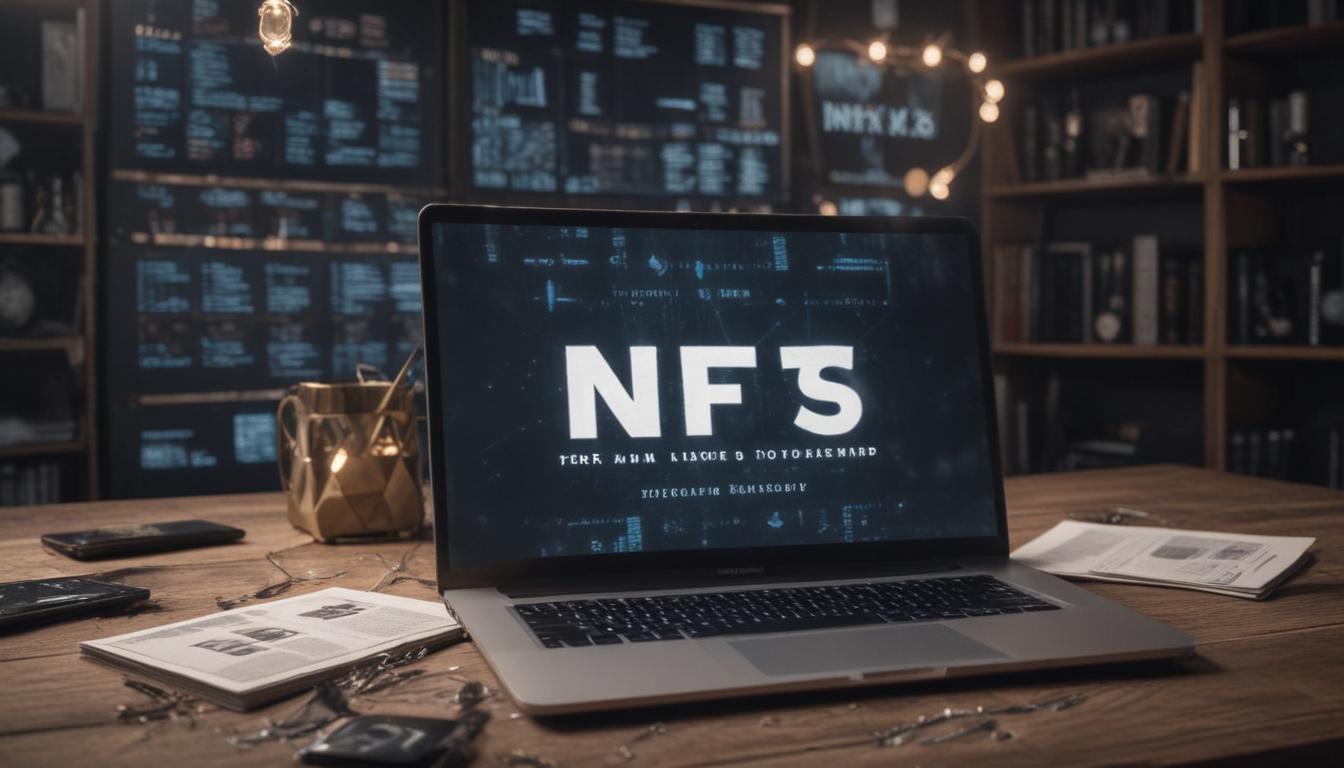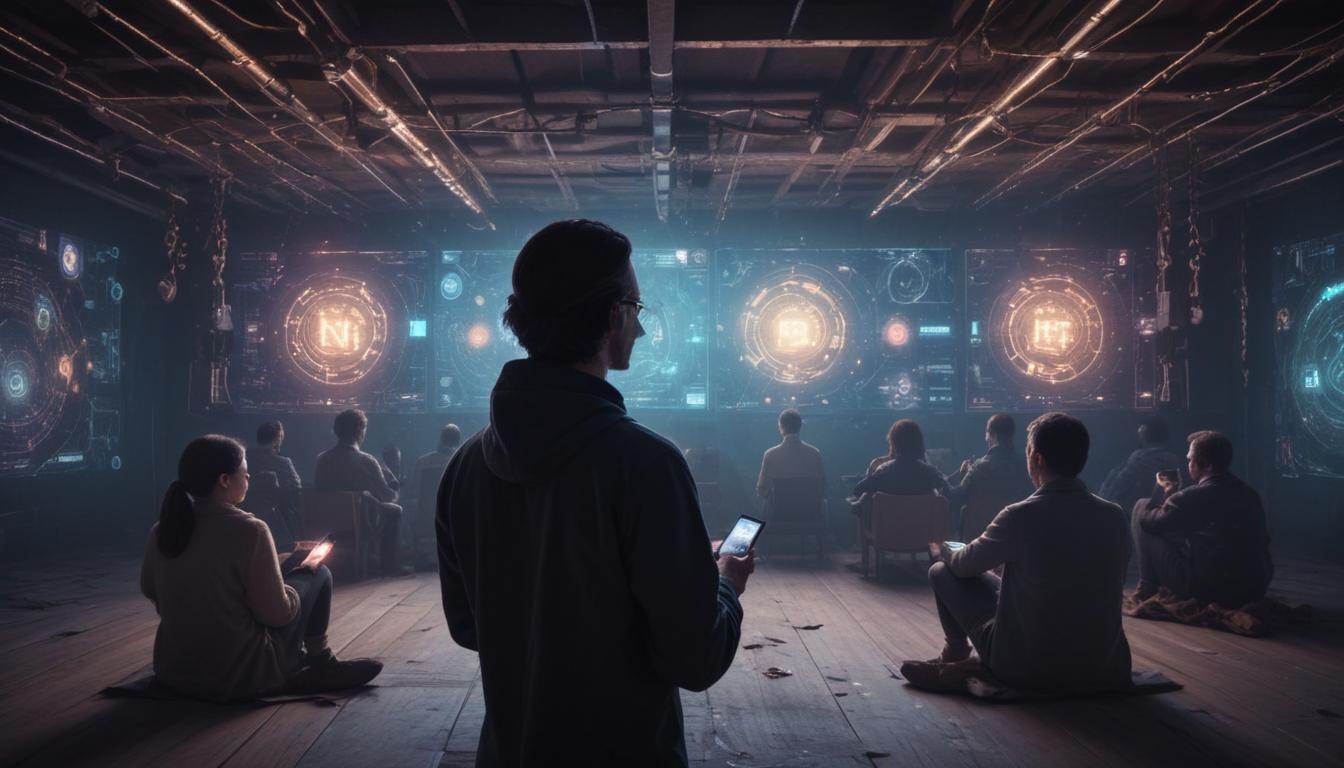Now Reading: Understanding NFTs and Digital Ownership
- 01
Understanding NFTs and Digital Ownership
Understanding NFTs and Digital Ownership

Non-Fungible Tokens (NFTs) Digital Ownership Explained
Have you seen headlines about digital art selling for millions and felt completely lost? Does the term “non-fungible token” sound like complex jargon from a world you’ll never understand? You are not alone. For many, the concept of NFTs is shrouded in mystery, making it seem inaccessible and confusing. This feeling of being left out of a major technological shift can be frustrating, especially when it seems like everyone else is in on the secret.
The good news is that the core idea behind NFTs is much simpler than it sounds. This guide is here to be your solution. We will cut through the noise and break down exactly what NFTs are, how they work, and why they matter in a way that anyone can grasp. Forget the complex technical language. By the end of this article, you will have a clear understanding of this revolutionary technology and how it is reshaping the very idea of ownership in our increasingly digital world.
What Does Non-Fungible Actually Mean
To understand what is “non-fungible,” it helps to first define its opposite “fungible.” A fungible item is something that is interchangeable with another identical item. Think of a dollar bill. If you and a friend each have a one-dollar bill and you swap them, you both still have the same value. Your dollar is not unique; it can be replaced by any other dollar without any loss or change in worth. The same applies to a bar of gold or a share of a company’s stock. Fungible assets are all about interchangeability and uniform value.
A non-fungible item, on the other hand, is entirely unique and cannot be replaced with something else. The Mona Lisa painting is a perfect example. While you can find thousands of prints and digital copies of it, there is only one original painting by Leonardo da Vinci. Your family home is another non-fungible asset; it has a unique location, history, and specific features that cannot be perfectly replicated. Non-Fungible Tokens (NFTs) apply this principle of uniqueness to digital items. They act as a certificate of authenticity for a digital file, proving that while it may be copied, there is only one official, original version.
How Do NFTs Work on the Blockchain
NFTs get their power from a technology called the blockchain. You can think of a blockchain as a highly secure, shared digital ledger or notebook that is maintained by thousands of computers around the world. Because it is decentralized and distributed, no single person or company can alter its records once they have been added. This makes it an incredibly trustworthy system for recording information, such as who owns what. Most NFTs are built on the Ethereum blockchain, but other blockchains also support them.
When a digital item is turned into an NFT, a process called minting occurs. During minting, a unique token is created on the blockchain that contains essential information about the digital asset. This includes who created it, who currently owns it, and a link to the actual digital file (like an image, video, or song). Every time the NFT is sold, that transaction is recorded on the blockchain, creating a permanent, public, and verifiable history of ownership. This solves a huge problem for the digital world where anything can be copied endlessly. With an NFT, you can definitively prove you own the original.

What Are NFTs Used For
Digital Art and Collectibles
The most well-known use for NFTs is in the world of digital art and collectibles. Before NFTs, digital artists struggled to sell their work as “originals” because any file could be perfectly duplicated. NFTs changed the game by allowing artists to create a verifiable one-of-a-kind version of their digital work. This empowers artists to sell their creations directly to a global audience and even program royalties into the NFT, so they receive a percentage of the profit every time their work is resold in the future.
This same principle applies to digital collectibles. Projects like CryptoPunks and Bored Ape Yacht Club are collections of unique digital avatars that function like rare trading cards. Their value comes from their verifiable scarcity and the community built around them. Owning one of these NFTs is not just about the image; it is about holding a status symbol and a key to an exclusive digital club, proving ownership of something rare and sought after.
Gaming and Virtual Worlds
The gaming industry is another area where NFTs are making a significant impact. Traditionally, when you buy an in-game item like a special sword or a character outfit, you don’t truly own it. You are just licensing it from the game company, and it stays locked within that one game. NFTs turn these in-game assets into items that you truly own. You can buy, sell, and trade your NFT-based game items on open marketplaces, potentially for real money, outside of the game itself.
This concept of true digital ownership is fundamental to the development of the metaverse—a persistent, shared virtual space where users can interact with each other and with digital objects. In the metaverse, NFTs will function as deeds to virtual land, tickets to virtual concerts, and unique clothing for your avatar. They are the foundational building blocks that will allow for a functioning economy within these new digital worlds, ensuring your virtual property is truly yours.
The Future of Digital Ownership
While the hype around multi-million dollar digital art sales has captured headlines, it is important to look beyond the speculation. At its core, an NFT is a powerful technology for verifying ownership in a digital realm. It is a tool that provides authenticity and scarcity in a world where those things have traditionally been absent. The technology is still in its early stages, and the market will undoubtedly continue to evolve.
The true potential of NFTs extends far beyond art and gaming. Imagine event tickets as NFTs to eliminate fraud, university degrees as NFTs to instantly verify credentials, or even property deeds as NFTs to streamline real estate transactions. While the path forward may have its ups and downs, the fundamental innovation of verifiable digital ownership is here to stay. NFTs are not just a passing trend; they represent a foundational shift in how we interact with and assign value to assets in the digital age.



































